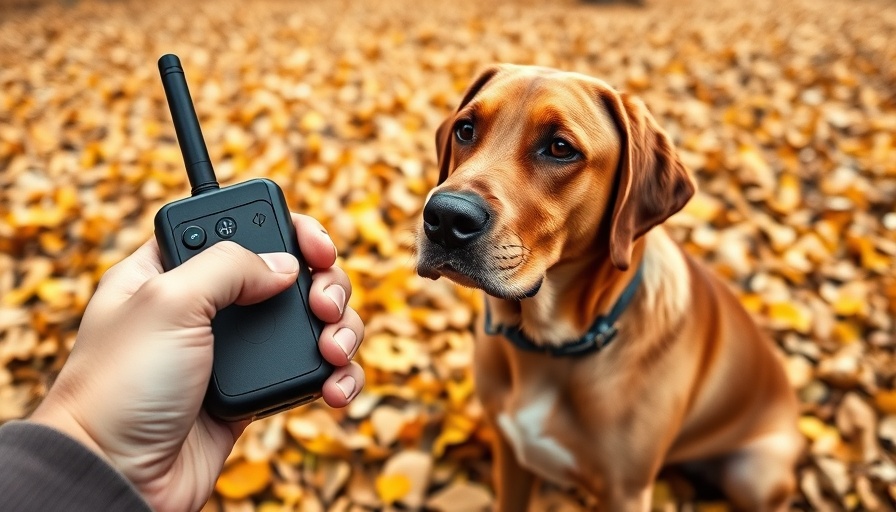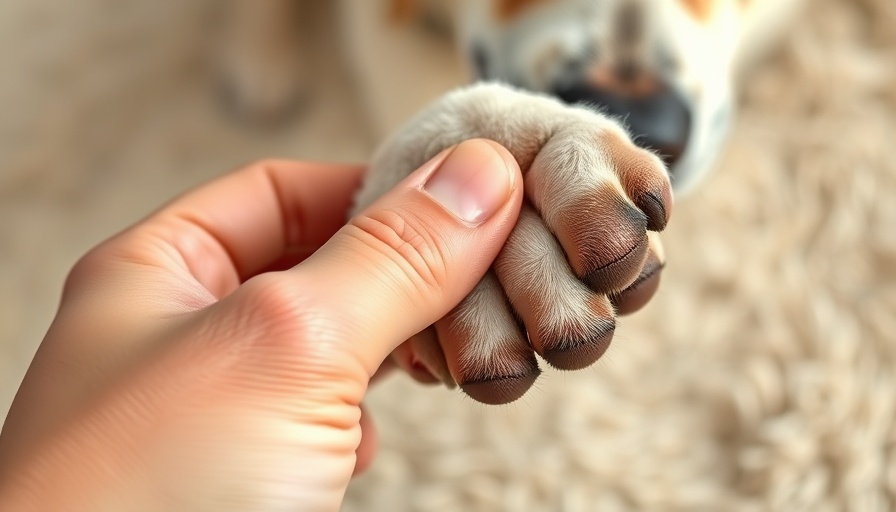
Understanding Value Ratios in Canine Behavior
When it comes to managing our dogs, particularly in challenging situations, understanding the concept of value ratios can transform the dynamic between our furry companions and their environment. The principles of these ratios revolve around the concept of resource guarding—a common behavior where dogs exhibit possessiveness over items they deem valuable, such as food, toys, and even their humans.
The Roots of Resource Guarding
Resource guarding, or possessive aggression, can manifest in various forms—from milder signs like a stiff posture or low growls to more intense behaviors, such as lunging or biting. This natural instinct comes from the dog’s evolutionary history where access to resources determined survival. As such, it's crucial for dog owners to recognize that this behavior is not simply a bad habit; it's an instinctual reaction rooted in deep-seated behavioral traits.
Species-wide research on resource guarding indicates that genetics can play a role, with certain breeds more prone to guarding behaviors than others. Furthermore, the history of the individual dog, including past experiences with resource scarcity and stress, can contribute to the severity and expression of guarding tendencies.
Applying Value Ratios to Change Behavior
Utilizing value ratios involves manipulating the situation in such a way that the dog perceives the value of relinquishing a resource as greater than the value of keeping it. This can be achieved through desensitization and counterconditioning—techniques recommended by dog trainers and behaviorists alike.
For example, if a dog guards its food bowl, the owner might start by tossing treats at a distance, reinforcing the idea that the owner's approach results in positive outcomes. Over time, this practice can shift the dog’s emotional response from anxiety and aggression to anticipation of pleasant interactions.
Management Strategies for Resource Guarding
Effective management is key to preventing resource guarding from escalating. This includes:
- Keeping food and high-value items out of reach when not in use.
- Feeding dogs in separate spaces to avoid competition.
- Practicing 'leave it' and 'drop it' commands consistently, reinforcing the idea that giving up a resource can yield greater rewards.
By actively managing the environment, dog owners can create scenarios where resource guarding is less likely to occur, ultimately fostering a safer, more trusting relationship.
Practical Insights: Preventing Resource Guarding in Puppies
Prevention is always better than treatment. For new puppies, or when introducing a new dog into a home, early training and socialization can significantly reduce the likelihood of resource guarding behaviors developing. This includes:
- Regularly handling their food and toys, but always pairing it with positive reinforcement.
- Encouraging shared play experiences or cooperative games that promote sharing and bonding.
- Teaching puppies how to respond positively when humans approach their resources, ensuring they understand that such intrusions might lead to rewards rather than theft.
Concluding Thoughts on Resource Management
Understanding resource guarding through the lens of value ratios not only sheds light on your dog’s behavior but also equips owners with the tools to foster better behavior and relationships. It’s imperative to approach the issue with empathy and knowledge, moving from potential fear and aggression to a more robust understanding between dog and owner.
By employing proactive management techniques and consistent training, dog owners can cultivate a trusting relationship with their pets, making their shared living spaces harmonious and enjoyable.
Need help addressing resource guarding with your dog? Seek out a certified dog trainer for a personalized training plan!
 Add Row
Add Row  Add
Add 




Write A Comment